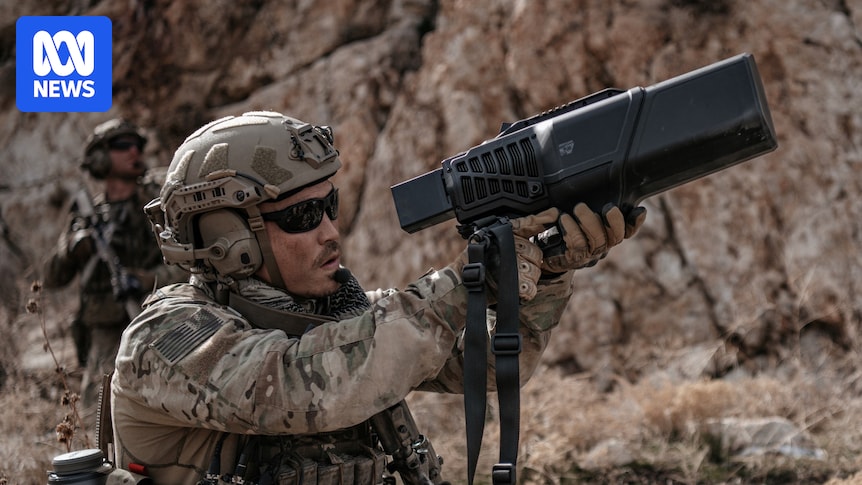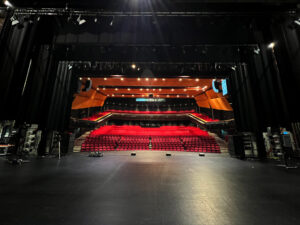
As European nations bolster their defenses in response to the ongoing war in Ukraine, Australian companies are seizing the opportunity to supply cutting-edge drone warfare technology. The demand for Australian defense technology has surged, propelling the stocks of engineering and software innovators to unprecedented heights.
Despite a recent peace deal in the Middle East, analysts caution that the appetite for defense technology shows no signs of waning. Australian companies are at the forefront of a vital sector: anti-drone technology. This technology spans from “soft kill” tools, which detect and jam drone signals, to “hard kill” solutions, such as lasers that can bring drones down. While these technologies are crucial on battlefields and borders, they also hold potential for civilian applications, including at airports and large events.
Tensions and Defense Spending Reach Historic Levels
Experts describe the current climate in Eastern Europe as a “shadow drone war.” Reports indicate that drones linked to Russia have made numerous incursions into peaceful European NATO nations that support Ukraine. The latest wave began on September 10, when 19 suspected Russian drones entered Polish airspace during an attack on Ukraine, prompting an emergency military operation to neutralize them.
Polish Prime Minister Donald Tusk remarked that the incident represented “the closest we have been to open conflict since World War II.” This situation, coupled with the spillover tensions from Ukraine, has driven defense spending to levels not seen since the mid-20th century. According to the International Institute for Strategic Studies, global defense spending reached $3.8 trillion in 2024, increasing from an average of 1.6% of GDP in 2022 to 1.9%.
“NATO members have committed to boosting their defense spending to 5% of GDP by 2035, up from a 2% target back in 2014.”
This influx of funding has created opportunities for companies developing defense technologies.
The Future of Warfare
Among the Australian companies riding this wave is DroneShield, which has seen sales soar by over 400% compared to last year after securing a $60 million contract with an unnamed European military customer. Chief Executive Oleg Vornik noted that the utility of anti-drone equipment was underestimated until the Russian invasion of Ukraine. Now, DroneShield products are employed by Ukraine and European countries to safeguard airspace, including Denmark, following drone incursions over military bases.
DroneShield’s offerings include a radio device that alerts users to nearby drones and a “drone gun,” a robust piece of hardware that disorients drones, forcing them to land or crash. The company’s shares have quadrupled since the start of the year, reflecting its rapid growth.
“With the start of the war in Ukraine, all the military planners around the world were saying, ‘Hey, the next war will be fought like this one is — with drones,'” Mr. Vornik said.
DroneShield’s revenue has reached $193 million this year, more than tripling last year’s $57 million. The company is scaling its manufacturing capacity from $500 million to $2.4 billion annually, with significant expansions in Australia and new facilities in Europe and the US.
Mr. Vornik, originally from Russia, moved to New Zealand and later Australia. He was targeted by Russian sanctions in 2022 due to Ukraine’s use of DroneShield equipment. He acknowledges that the tensions in Europe have been “unfortunate for humanity, but positive for DroneShield.”
Brains vs. Brawn in Modern Warfare
If future conflicts are dominated by drones, software engineers may become as crucial as soldiers. As attack drones grow more sophisticated, companies like DroneShield, which employs 400 engineers and has utilized artificial intelligence for five years, continuously update their software to stay ahead.
Australian company Electro Optic Systems (EOS) operates at a similar pace. Its Canberra-made Apollo laser can silently incapacitate targets, taking down around 30 drones per minute from up to 6 kilometers away. EOS technology is also used by Ukraine against Russian drones, with feedback from troops enabling on-the-fly improvements, according to CEO Andreas Schwer.
EOS recently sold an Apollo laser unit to a Western European NATO country for $125 million. Bell Potter senior analyst Giuliano Sala Tenna considers both companies global leaders in counter-drone systems, several years ahead of most competitors. He sees Australia’s engineering prowess as a key advantage.
“The US military said they’re not going to sell that or share that with our allies … most Western nations won’t purchase from China for military needs for obvious reasons … and a number of countries now find it problematic to acquire Israeli tech.”
EOS, founded by former Australian space program leader Ben Greene and now led by Dr. Schwer, offers products for drones and space, including high-powered lasers capable of downing satellites. This provides clients with new capabilities to protect their territories from surveillance.
The Peacetime Dividend
Despite recent successes, shares in DroneShield and Electro Optic Systems have plummeted in the past two weeks. While volatility is common in rapidly growing sectors, the prospect of peace may also be influencing investor behavior. Analysts suggest that the ceasefire deal and hostage exchange between Israel and Hamas prompted investors to offload military stocks.
DroneShield’s share price, which more than doubled from September to October to $6.50, fell by two dollars, while EOS shares halved from $10 to $5. Private investor and former stockbroker Mike Mangan, who purchased DroneShield shares in early 2024, described the experience as “a very volatile ride.”
“The Ukraine war took many by surprise, including in the finance world, but given the current state of the world, the road to peace is complicated,” Mr. Mangan said.
He emphasized that while some hope for a swift return to normalcy, the geopolitical landscape suggests otherwise. With US President Donald Trump recently canceling a meeting with Russian President Vladimir Putin, the drone war appears far from over.





